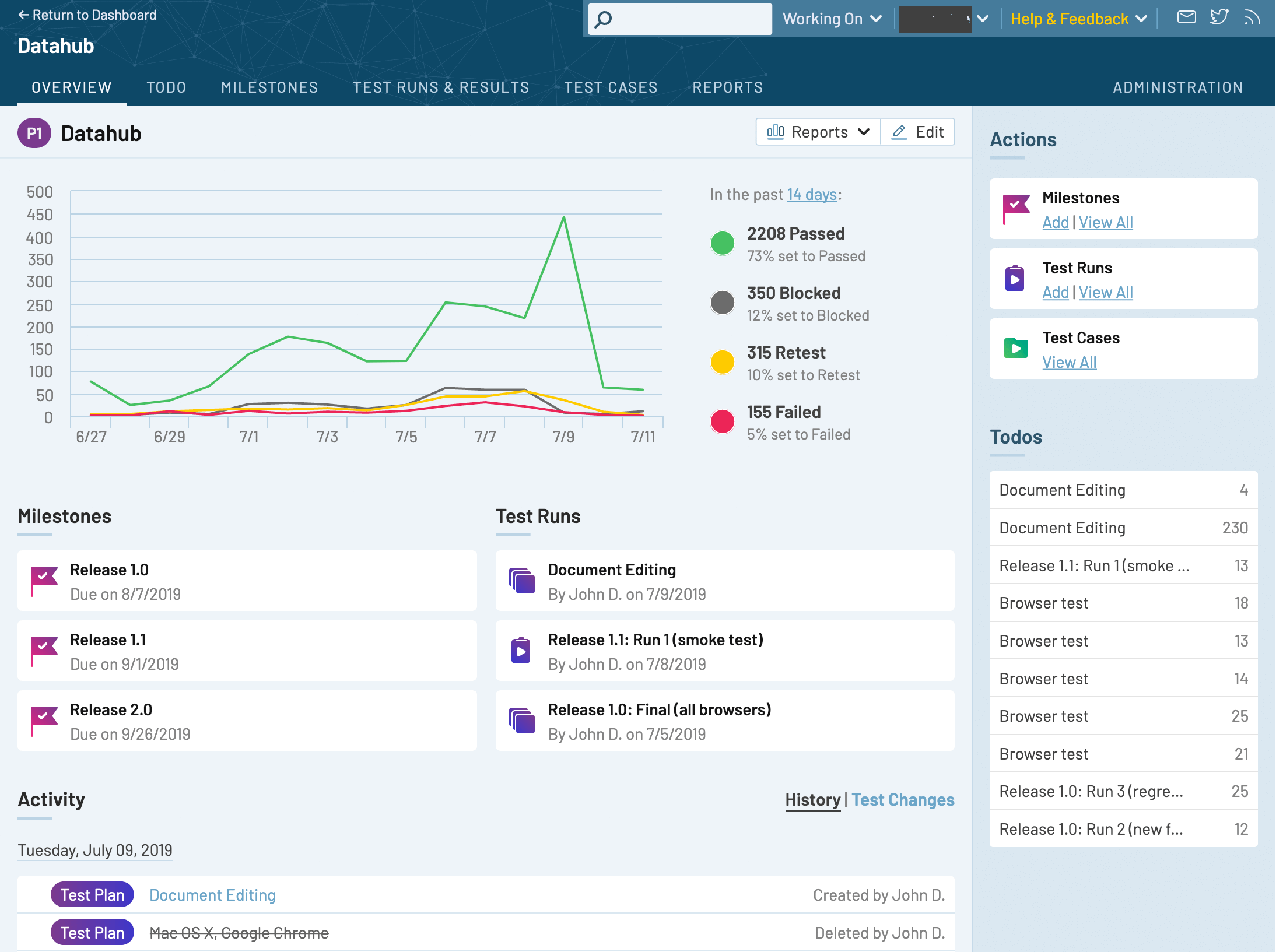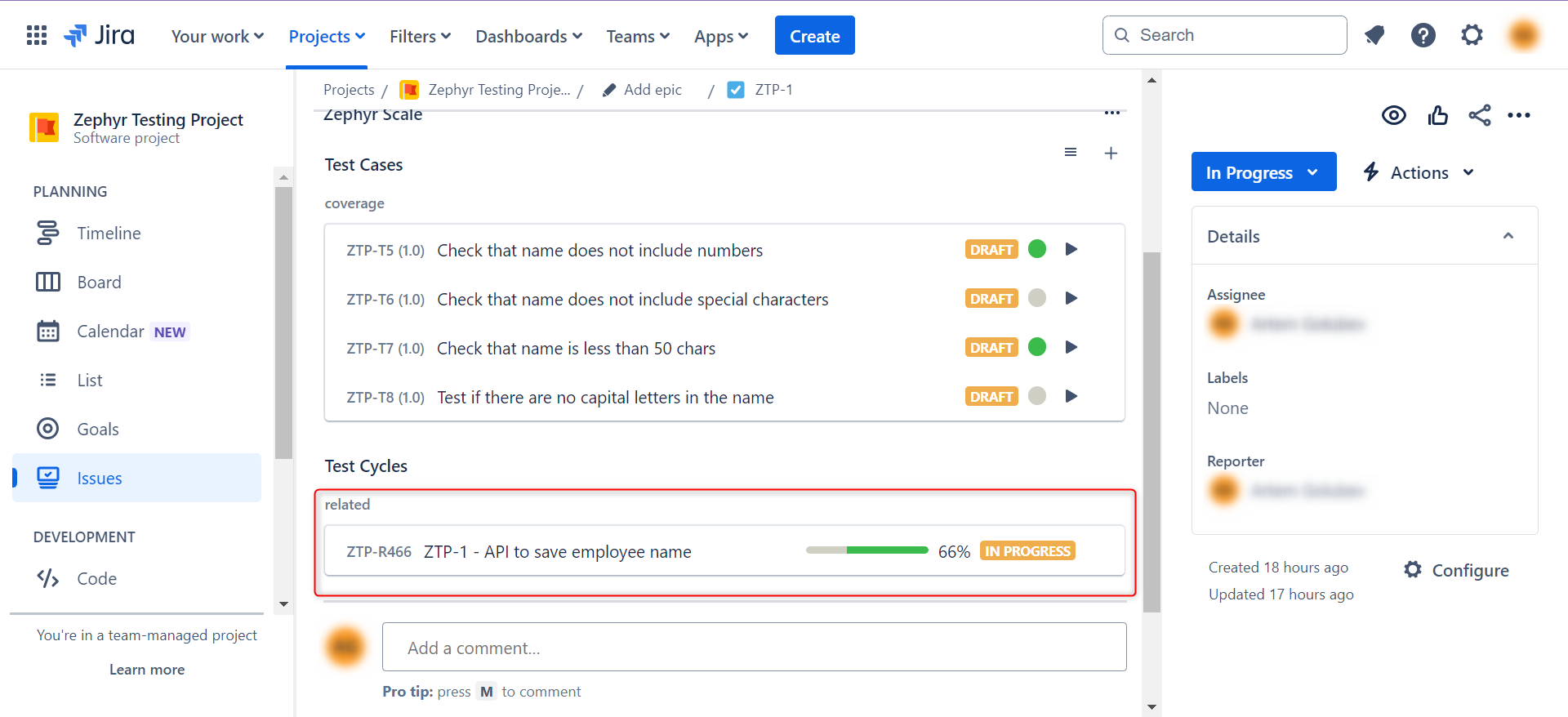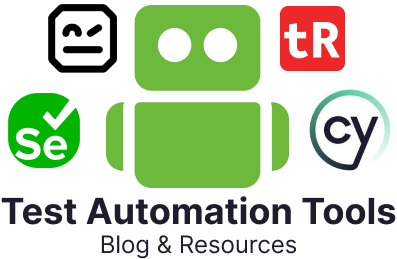Test management tools are essential in Quality Assurance (QA) for efficiently managing and streamlining the testing process. Test management tools are designed to help teams plan, execute, and monitor tests, manage test cases, and ensure comprehensive coverage, all while facilitating communication and collaboration across the team. TestRail, Zephyr, and Xray are among the most popular options, which are extensively used by QA teams across various industries. Each of these tools offers a unique set of features tailored to different testing needs, project sizes, and team dynamics.
This in-depth comparison will explore TestRail, Zephyr and Xray from multiple angles to provide a comprehensive understanding of their capabilities. By the end of this analysis, you will have a clear understanding of the strengths and weaknesses of these tools, helping you to make an informed decision about which test management tool is the best fit for your team’s needs and strategic goals.
In General
TestRail, developed by Gurock, is celebrated for its user-friendly interface and robust reporting capabilities, making it a popular choice for teams seeking a dedicated test management platform. You can read this article to get an overview of TestRail: TestRail-overview.

Zephyr is a suite of test management tools that provides comprehensive solutions for managing test cases, execution and reporting. Zephyr is known for its integration with JIRA, a popular project management tool. Zephyr offers different products, such as Zephyr Squad, Zephyr Scale and Zephyr Enterprise, catering to different organization sizes and testing needs.
To get an overview of Zephyr, go through our article: Zephyr-overview.

Xray is a test management app for JIRA, developed by Xblend, and is seamlessly integrated into the JIRA environment. It enables teams to manage both manual and automated tests, offering powerful integration options and extensive reporting features. Xray is widely chosen by teams already using JIRA for its native compatibility and ease of use within the JIRA ecosystem. We have provided an overview of Xray, read this article to know more: Xray-overview.

Key Features Comparison
Let us compare the essential features of these three tools one by one:
Test Case Management
TestRail:
- Offers a highly intuitive interface for creating organizing and managing test cases.
- Supports the categorization of test cases by various criteria, such as priority, type and status.
- Provides version control and cloning features to facilitate test case reuse.
- Includes a rich-text editor for detailed test steps, expected results and preconditions.
- Enables bulk editing of test cases to save time during test creation or updates.
Zephyr:
- Integrates tightly with Jira, allowing test cases to be linked to Jira issues, such as stories or bugs.
- Offers multiple product versions with varying features: Zephyr Squad is ideal for smaller teams, while Zephyr Scale and Enterprise cater to larger, more complex needs.
- Provides a hierarchical folder structure for better organization of test cases.
- Supports versioning and reusability of test cases across different projects or releases.
- Zephyr Scale offers advanced features like custom fields and templates for test cases.
Xray:
- Natively embedded in Jira, allowing test cases to be created and managed directly within the Jira interface.
- Supports multiple test types, including manual, generic and automated (Cucumber-based) tests.
- Provides a parameterized test case feature for data-driven testing.
- Ensures traceability by linking test cases directly to Jira issues, requirements or user stories.
- Allows for easy test organization using test sets, folders and custom fields.
Test Execution and Planning
TestRail:
- Facilitates comprehensive test planning through the creation of test runs and test plans.
- Offers real-time visibility into test progress, including test statuses, results and assignment of test runs to different team members.
- Supports parallel test execution and scheduling, enabling efficient management of multiple test cycles.
- Integrates seamlessly with CI/CD tools (e.g., Jenkins, Bamboo) to automate test execution and reporting.
Zephyr:
- Provides flexible test execution capabilities, including the ability to create test cycles and test executions within Jira.
- Supports assigning test executions to individual testers and tracking progress in real-time.
- Integrates with popular CI/CD tools, such as Jenkins, Bamboo and TeamCity, to automate test execution and gather results.
- Zephyr Scale includes advanced features like test execution cloning, test environment management and test execution workflow customization.
Xray:
- Enables test planning and execution directly within Jira, leveraging Jira’s native capabilities.
- Supports defining and executing multiple test cycles and test sets with configurable statuses.
- Provides automation support through CI/CD integrations with Jenkins, Bamboo and other tools.
- Allows detailed filtering and scheduling of test runs, making it easy to manage large-scale testing activities.
Reporting and Analytics
TestRail:
- Provides a comprehensive set of built-in reports, such as test case coverage, test run results and defect distribution.
- Offers customizable dashboard widgets for real-time visibility into testing metrics and insights.
- Supports exporting reports in multiple formats (PDF, Excel, CSV) for easy sharing and analysis.
- Integrates with third-party reporting tools like Power BI and Tableau for advanced analytics.
Zephyr:
- Offers robust reporting capabilities with detailed metrics on test execution, test coverage and defect tracking.
- Provides integration with Jira’s native reporting features and dashboards, allowing for custom report creation.
- Zephyr Scale and Enterprise offer advanced analytics with customizable dashboards and visualizations.
- Supports integration with business intelligence (BI) tools like Power BI and Qlik for deeper insights.
Xray:
- Utilizes Jira’s built-in reporting and dashboard capabilities to provide detailed test-specific metrics and insights.
- Offers traceability reports, test execution results and test coverage analysis.
- Supports generating custom reports using JQL (Jira Query Language) and exporting them in various formats.
- Integrates with BI tools like eazyBI for enhanced reporting and visualization capabilities.
Integrations
TestRail:
- Provides extensive integrations with various tools, including Jira, GitHub, GitLab, Jenkins, Bamboo, Selenium and more.
- Offers a RESTful API for custom integrations and data exchange with other tools.
- Supports plugins and extensions for popular IDEs like Visual Studio Code and IntelliJ IDEA.
Zephyr:
- Natively integrates with Jira and supports a wide range of CI/CD tools, such as Jenkins, Bamboo and TeamCity.
- Offers a REST API for custom integrations and additional flexibility.
- Zephyr Scale supports integrations with automation frameworks like Selenium, Cucumber and JUnit.
Xray:
- Fully integrated within Jira, leveraging Jira’s ecosystem for seamless connectivity with various tools.
- Supports integration with CI/CD tools, including Jenkins, Bamboo and GitLab CI.
- Offers REST API and GraphQL API for custom integrations and automation.
- Compatible with popular test automation frameworks, such as Selenium, Cucumber, JUnit and TestNG.
Strengths and Weaknesses
| Tool | Strength | Weakness |
| TestRail |
|
|
| Zephyr |
|
|
| Xray |
|
|
Pricing Comparison
TestRail:
- Provides both cloud-based and on-premises pricing models.
- Cloud pricing starts at $37 per user per month, billed annually, with discounts available for larger teams.
- On-premises pricing is based on the number of users and requires a custom quote.
- Offers a 14-day free trial for both cloud and on-premises versions.
Zephyr:
- Pricing varies based on the product: Zephyr Squad, Zephyr Scale or Zephyr Enterprise.
- Zephyr Squad starts at $10 per user per month for cloud, with discounts for annual billing.
- Zephyr Scale is priced at $20 per user per month, with a tiered pricing model based on the number of users.
- Zephyr Enterprise offers pricing upon request, catering to larger organizations.
- A 30-day free trial is available for all versions.
Xray:
- Follows a per-user pricing model based on the number of Jira users.
- Cloud pricing starts at $10 per user per month, with discounts for larger teams and annual billing.
- Server and Data Center pricing is dependent on the number of Jira users and requires a custom quote.
- Offers a 30-day free trial for new users.
Comparison Chart
Now let’s consolidate what we have discussed till now into a table.
| Feature | TestRail | Zephyr | Xray |
| Overview | A web-based test case management tool known for its simplicity and ease of use. | An enterprise-level test management tool with strong Jira integration. | A Jira-native test management tool with comprehensive test management capabilities. |
| Integration with Jira | Integrates via add-on; supports linking, reporting and traceability in Jira. | Native integration with Jira; offers seamless linking and traceability of test cases. | Fully integrated with Jira; supports native Jira workflows, linking and traceability. |
| User Interface | Clean, simple and intuitive UI; easy to learn for beginners. | Modern UI with robust features but can be overwhelming for new users. | Native Jira look and feel; familiar for Jira users but can be complex for non-Jira users. |
| Test Case Management | Comprehensive test case management with customizable fields and statuses. | Supports test creation, execution and tracking with various test types. | Supports manual and automated test cases with rich test case management features. |
| Reporting and Analytics | Offers customizable dashboards and a variety of built-in reports; lacks advanced analytics. | Advanced reporting with customizable dashboards and detailed metrics. | Robust reporting within Jira; supports customizable gadgets and analytics. |
| Automation Support | Supports API-based integration with popular tools like Selenium, JUnit, etc. | Supports various automation tools and frameworks; integrates well with CI/CD pipelines. | Strong support for automation frameworks; native integration with Cucumber, Selenium, JUnit, etc. |
| Customization | Highly customizable with custom fields, templates and workflows. | Offers extensive customization; adapts well to various team needs. | Customizable within Jira’s ecosystem; leverages Jira workflows and permissions. |
| Pricing | Subscription-based pricing; varies based on the number of users and deployment type. | Subscription-based; priced per user or through Jira subscription; also available as a standalone. | Jira add-on pricing model; requires Jira Software; cost depends on the number of Jira users. |
| Deployment Options | Cloud and on-premises deployment options available. | Available in cloud and server versions; can be deployed on-premises. | Available as a Jira plugin; compatible with both cloud and on-premises Jira. |
| Security and Compliance | Provides enterprise-grade security, SSO and data encryption. | Offers secure access, SSO, data encryption and compliance with industry standards. | Inherits Jira’s security model; complies with Atlassian’s security standards and practices. |
| Integration with Other Tools | Integrates with a variety of tools (CI/CD, automation, defect tracking). | Integrates with CI/CD tools, automation frameworks and other Atlassian products. | Seamless integration with Jira, CI/CD tools and other popular testing tools. |
| Ease of Use | Easy to use with a shallow learning curve; suitable for small to medium-sized teams. | Moderate learning curve; offers robust functionality but can be complex. | Steeper learning curve; best suited for teams already familiar with Jira. |
| Best For | Small to medium-sized teams looking for a straightforward, dedicated test management tool. | Enterprise-level teams needing a robust tool with deep Jira integration. | Teams heavily invested in Jira seeking a native test management solution. |
Key Takeaways
- TestRail is ideal for teams looking for a dedicated, easy-to-use test management tool with robust customization and reporting features. It offers flexibility with both cloud and on-premises deployment options.
- Zephyr is designed for enterprise-level test management with strong Jira integration and comprehensive reporting and analytics. It suits larger teams needing a scalable solution.
- Xray is the best fit for teams that are already using Jira and prefer a native test management tool integrated directly within Jira’s ecosystem, leveraging existing workflows and permissions.
